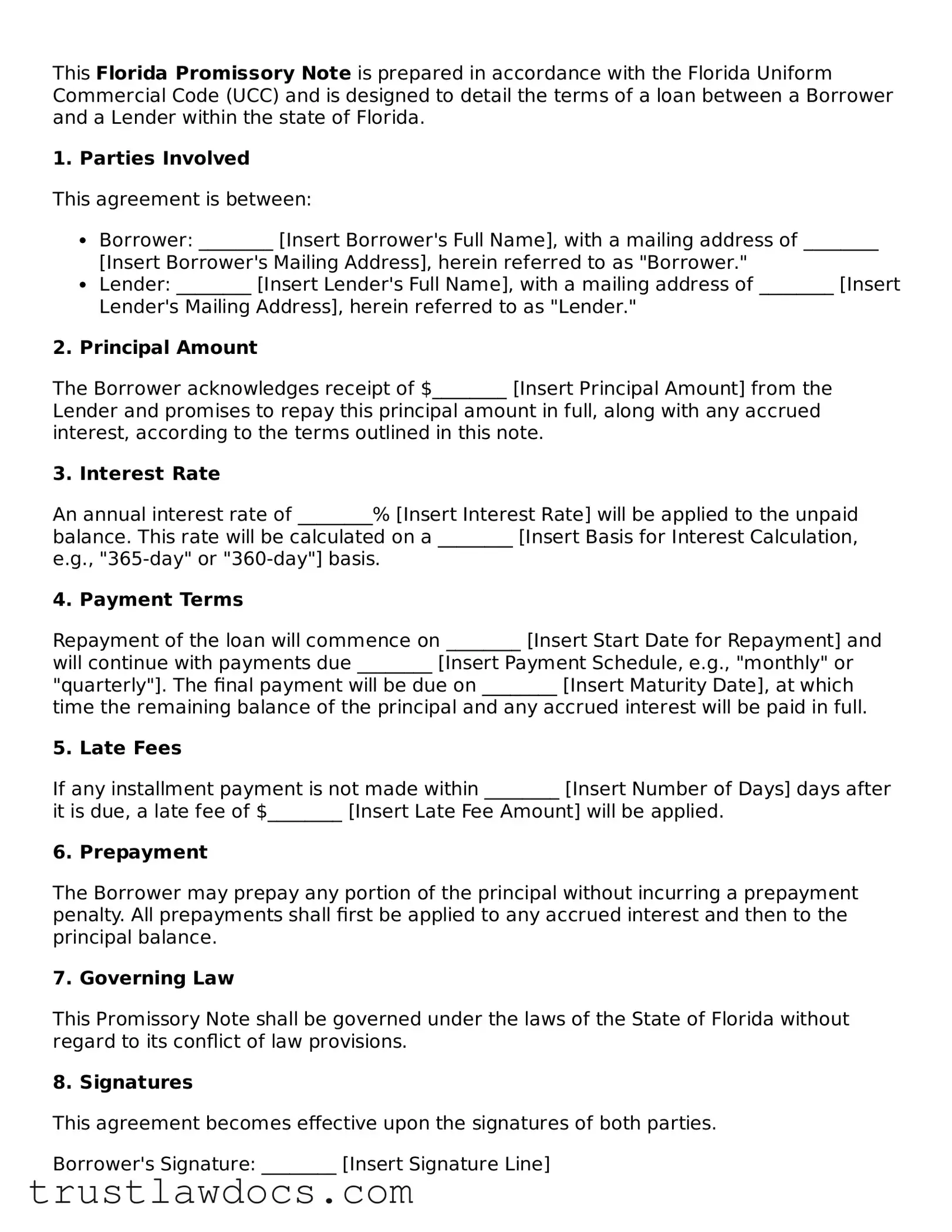What is a Florida Promissory Note?
A Florida Promissory Note is a legal document that outlines the terms under which money is borrowed and to be repaid. This includes the amount borrowed, interest rate, repayment schedule, and any collateral securing the loan. It serves as a binding agreement between a lender and a borrower in the state of Florida.
Is a written Promissory Note required in Florida?
While oral agreements can be enforceable, a written Promissory Note is highly recommended in Florida. A written document helps prevent any misunderstandings about the loan terms and can be necessary evidence in court if there is a dispute.
Are there different types of Promissory Notes in Florida?
Yes, there are mainly two types of Promissory Notes in Florida: secured and unsecured. A secured Promissory Note requires the borrower to pledge collateral, which the lender can claim if the loan isn't repaid. An unsecured Promissory Note does not require collateral, making it a higher risk for the lender.
How is the interest rate determined in a Florida Promissory Note?
The interest rate on a Florida Promissory Note is agreed upon by the lender and the borrower. However, it must comply with Florida's usury laws, which cap the maximum interest rate allowed. The current legal rates can change, so it's important to check the latest regulations.
What happens if a borrower defaults on a Promissory Note in Florida?
If a borrower defaults on a Promissory Note in Florida, the lender has the right to take legal action to recover the outstanding debt. If the note is secured, the lender may also seize the collateral. The specific course of action depends on the terms outlined in the Promissory Note.
Can a Florida Promissory Note be modified?
Yes, a Florida Promissory Note can be modified if both the lender and the borrower agree to the changes. The modifications should be made in writing and both parties should sign the updated agreement to ensure the changes are legally binding.
How is a Promissory Note legally enforced in Florida?
To legally enforce a Promissory Note in Florida, the lender must file a lawsuit in the appropriate court. The court will review the note, the circumstances of the default, and the attempts made to resolve the payment issue. If the court finds in favor of the lender, it may award a judgment that can include the outstanding debt, interest, and legal fees.
Does signing a Florida Promissory Note affect the borrower’s credit score?
Signing a Promissory Note itself does not affect a borrower's credit score. However, if the borrower fails to meet the repayment terms and the lender reports the default to credit bureaus, it can negatively impact the borrower's credit score.
Where can someone obtain a Florida Promissory Note form?
A Florida Promissory Note form can be obtained from legal document websites, attorneys specializing in financial agreements, or financial institutions. It's important to ensure the form complies with Florida law and accurately reflects the agreement between the lender and the borrower.
